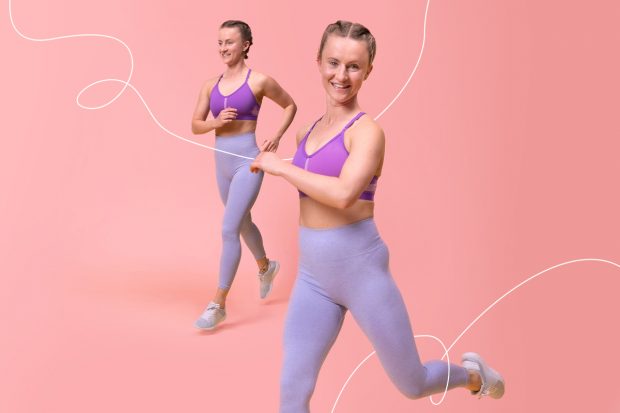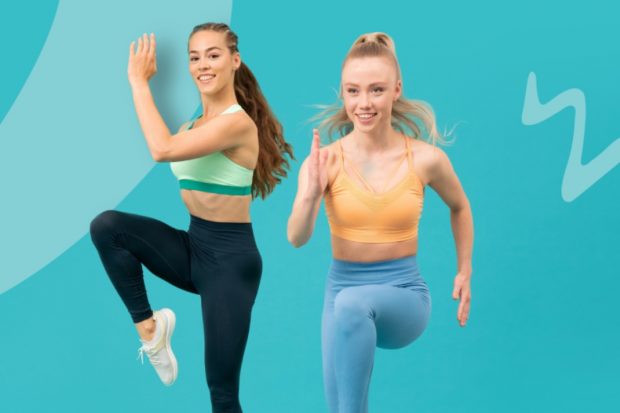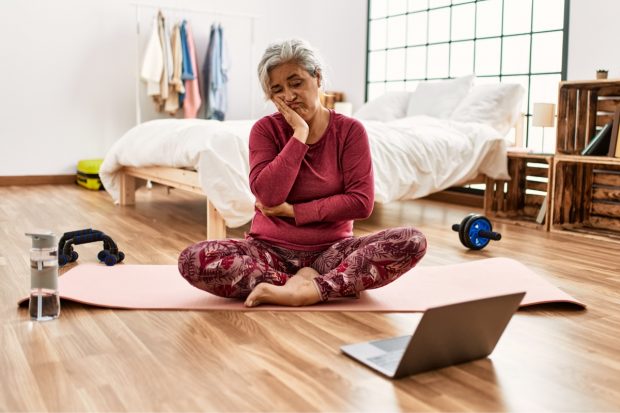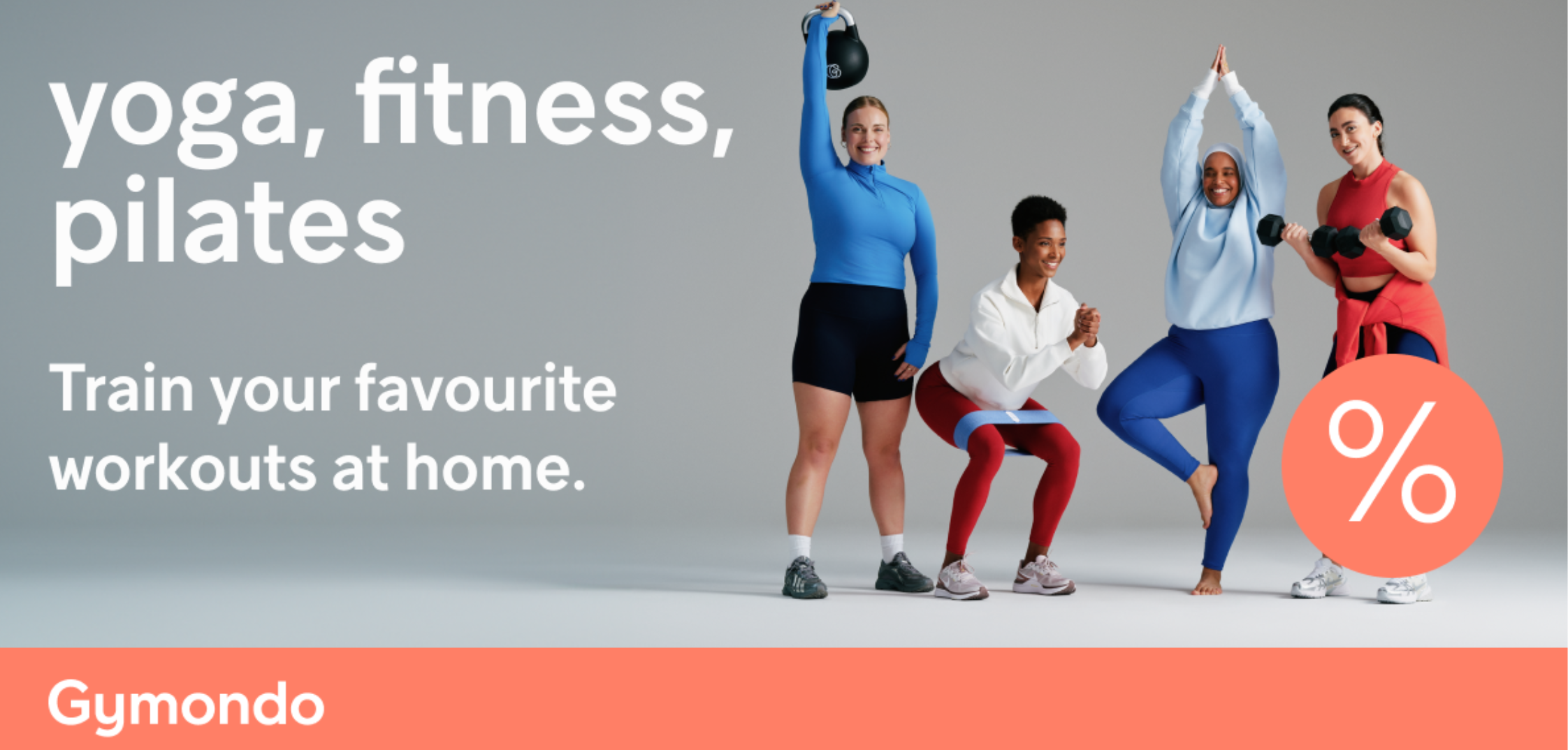
You want a great cardio workout that won’t wreak havoc on your joints, but what’s best for you and your goals — low-intensity steady-state cardio (LISS) or high-impact interval training (HIIT)?
LISS and HIIT are two of the most popular training styles around, yet both are polar opposite. Which one is best?
In this article, we’ll break down the pros and cons of each to help you choose the one that’s right for you.
Want to give both a try? Start your free trial with Gymondo today and explore 100s of LISS and HIIT workouts.
What’s LISS?

LISS is a form of cardiovascular exercise in which you maintain a steady pace for an extended period. Examples include jogging, walking, swimming, cycling or rowing.
Since most LISS activities don’t require equipment, it’s perfect for beginners. Plus, it’s easier to get started with LISS right from home.
Related: Getting Past a Weight Loss Plateau: The Pros and Cons of Steady-State Cardio
Pros and Cons of LISS

Pros
Less stress on the joints — Because you’re working at a lower intensity, it’s way easier on your joints than HIIT.
Increased endurance — Over time, training your body through steady-state exercise will increase your body’s capacity to do work for longer periods of duration.
Improved heart health — Maintaining a steady-state helps your body become more efficient at pumping oxygenated blood to your working muscles and moves deoxygenated blood back to the lungs for removal as carbon dioxide.
Quicker recovery time — Due to lower intensities, your body will remove metabolic waste and repair muscle tissue more quickly.
Improved ability to burn fat — Training at a lower intensity uses the aerobic energy pathway, which helps the body become more efficient at lipolysis—the breakdown of fatty acids (lipids) into energy.
Cons
Time-consuming — If your goal is to lose weight, you’ll have to train for longer periods of time to burn enough calories. HIIT burns significantly more calories in less time when compared to LISS.
Risk of overuse injuries — Repeating the same motions over and over again can lead to repetitive stress injuries.
Can be boring — Steady-state workouts can get boring and feel tedious if you repeat them day in and day out.
May cause weight loss plateaus — Doing only steady-state cardio workouts without changing things up eventually leads to weight loss plateaus. Why? Your body adapts to any type of training that you’re doing and will eventually stop responding to workouts in the same way.
Increased slow-twitch muscle fibers — Slow-twitch muscle fibers (Type I) generate less power and strength than fast-twitch fibers. This ultimately puts you at a disadvantage when engaging in weight training and HIIT workouts, which both require power and strength.
What’s HIIT?

HIIT workouts often mix cardiovascular exercises with resistance training. In a typical HIIT class, you can expect short bursts of intense exercise combined with periods of rest or low-impact activity. Alternating between hard-charging intervals and short rest periods elevates your heart rate to at least 80 percent of its maximum capacity, which is the optimal fat-burning zone.
According to research, HIIT burns more calories than most aerobic activities, including running. In a 20-minute timeframe, you could burn up to 273 calories in a HIIT class compared to 150 calories expended by steady-state cardio.
Related: HIIT: Burn Fat, Build Lean Muscle and Transform Your Body
Pros and Cons of HIIT

Pros
Improves heart health —HIIT boosts your heart health in a shorter period of time than any other exercise, including steady-state activities like jogging.
Aids in fat loss — HIIT workouts can be completed in as little as 20 minutes with the same calorie burning benefit as a 50-minute run.
Perfect for busy lifestyle — HIIT is perfect for busy parents, those with erratic work schedules or anyone who struggles to make it to the gym or commit to a fitness program.
Doable for all fitness levels —The great thing about HIIT is that it can be scaled to any fitness level using your own body weight.
Creates the afterburn effect — HIIT workouts lead to an afterburn effect, a period of elevated calorie burn up to 24 hours after you finish exercising. The afterburn effect is linked to increased metabolism and elevated calorie burn long after your workout is over.
Cons
Higher risk of injury — With HIIT, you move at a much faster pace, causing you to lose proper form for some exercises, which could lead to injury.
Puts strain on your body — Because HIIT workouts are highly intense, they put additional stress on your body, muscles and joints. If you train this way too often, you can risk damaging or straining your muscles or end up with overuse injuries. It’s best to stick to 2-3 times a week.
Not suitable for everyone — You should have a basic level of fitness to take part in HIIT workouts due to the high level of intensity. If not, you could cause undue stress on your heart and body.
Increased dizziness —When you’re alternating between standing and sitting exercises at increased speeds, your blood pressure can drop quickly, making you feel dizzy.
Spiked cortisol levels — HIIT pushes your body to limits that spike your cortisol (primary stress hormone) levels. Too high an increase in cortisol over long periods of time can result in a number of unwanted side effects, including digestive issues, bloating and weight gain. To combat this, intersperse HIIT exercise with enough rest and downtime in between sessions.
LISS vs. HIIT: Which One’s Best for You and Your Goals?
Does slow and steady win the race or is fast and furious best?
Deciding what’s best for you comes down to your fitness level, lifestyle and health and wellness goals.
If running a 5K sounds like a nightmare, LISS is probably not your thing. But if you hate feeling out of breath, you’ll probably want to pass on HIIT.
Just remember: Any movement you can fit into your day is better than nothing at all.
HIIT requires more vigorous training, so even 20-minute workouts done on the reg will burn more fat than LISS. And you might actually find those quick bursts of movement are much easier to fit into your day than long bouts of steady-state cardio.
Every workout style comes with pros and cons. What’s most important is that you pick a style of exercise that you like and can commit to.
Ready to try a wide variety of LISS and HIIT workouts? Head to Gymondo and start your 7-day free trial to get moving right from home.




Kommentar schreiben